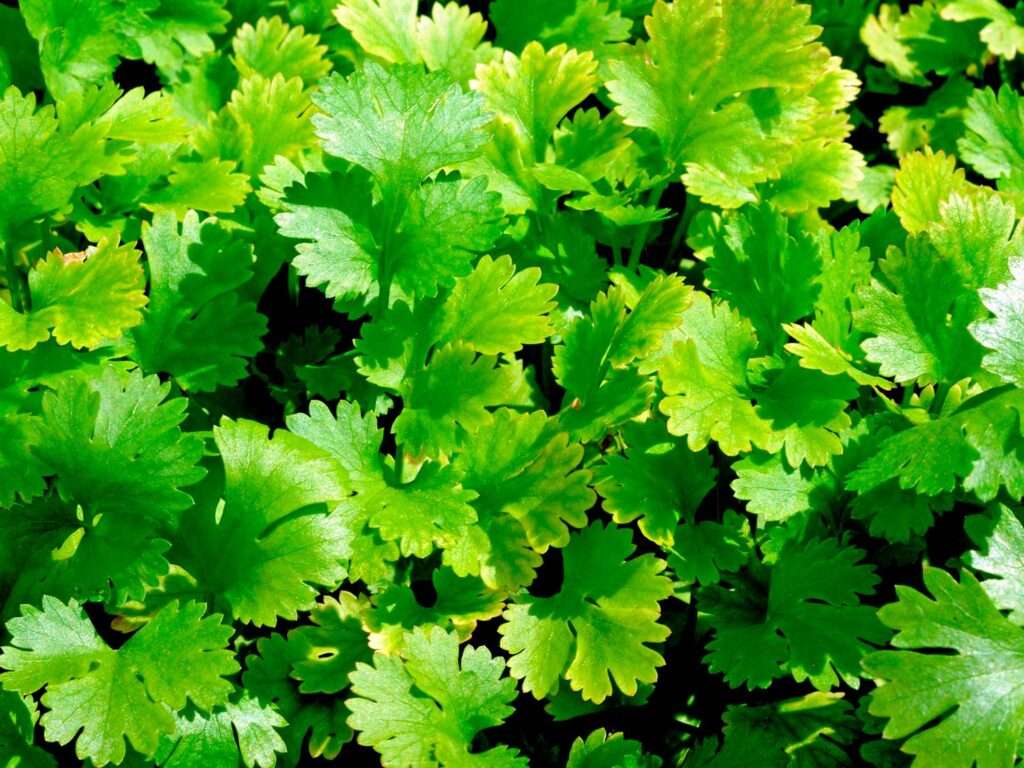
Description
This soft plant can reach a height of 50 cm (20 in). At the base of the plant, the leaves are extensively lobed; higher up on the flowering stalks, the leaves are slender and feathery. The leaves vary in shape. The plant’s flat, lacy leaves and slender, green stems—which are best consumed fresh—are what give cilantro its name. The seeds are referred to by its other popular name, coriander, and are frequently used as a spice in cooking.
Habitat
Originating in southern Europe and the eastern Mediterranean. Grows well in deep, fertile loams with sufficient drainage; it does well in full sun.
Uses
Notably, coriander was used to relieve respiratory, urinary, and gastrointestinal problems. In certain regions, the whole coriander plant is used in traditional medicine to cure diarrhea, vomiting, dysentery, and flatulence.

Varieties
Coriander comes in a number of varieties, such as:
“Leisure“: Grows in 50 to 55 days and is well-liked for its flavor and resilience to bolting.
“Longstanding“: A variety of cultivars that mature in 60 to 90 days and have a tendency to be tall and sluggish to bolt.
‘Calypso’: Does not bolt quickly; it matures in 50–55 days but does not go to seed for 120–150 days.
“Santo“: Often offered as “standard” cilantro, this variety matures in 50–55 days and has good bolt resistance.
‘Cruiser’: Steep stems and an upright habit on uniform plants; matures in 50–55 days
Plant Care
- Light
On most days, the coriander plant needs roughly six hours of direct sunlight to grow. But be careful when you layout your garden—strong sunshine will scorch coriander leaves, so pick a location away from direct sunlight. If you live in a hot environment, you might want to plant your coriander in pots that you can occasionally move into the shade, or where it can get some afternoon shade. An early bolt (plant going to seed) can be brought on by excessive heat and direct sunlight.
- Soil
Coriander grows best in loose, loamy, fast-draining soil that has a pH that is somewhat acidic. A plant may bolt too soon if there is an excessive amount of moisture retained in the soil.
- Water
When the seeds germinate and the seedlings grow, keep the soil evenly moist but not saturated. For seedlings, around one inch of water per week is good. Even though they need less water as they get older, mature plants still prefer moist soil. Just watch out that their roots are never wet.
- Temperature and Humidity
Coriander thrives best in relatively cool environments, preferring temperatures that hover between Temperatures between 60 and 70 degrees Fahrenheit are ideal for coriander growth; any higher or lower and the plant may quickly bolt. In spite of its cool-weather adaptability, coriander remains susceptible to frost. In the event that unexpectedly cool weather is forecast, keep row covers available to shield your plants. High humidity and rainy weather are also difficult for coriander.
- Fertilizer
Although coriander usually grows well without fertilizer, it is not harmful to treat it once a month with an organic blend designed for herbs. Additionally, to aid in the growth of your plants—especially when starting from seed—feel free to incorporate a nutrient-rich compost or other organic matter into your soil.
Table





